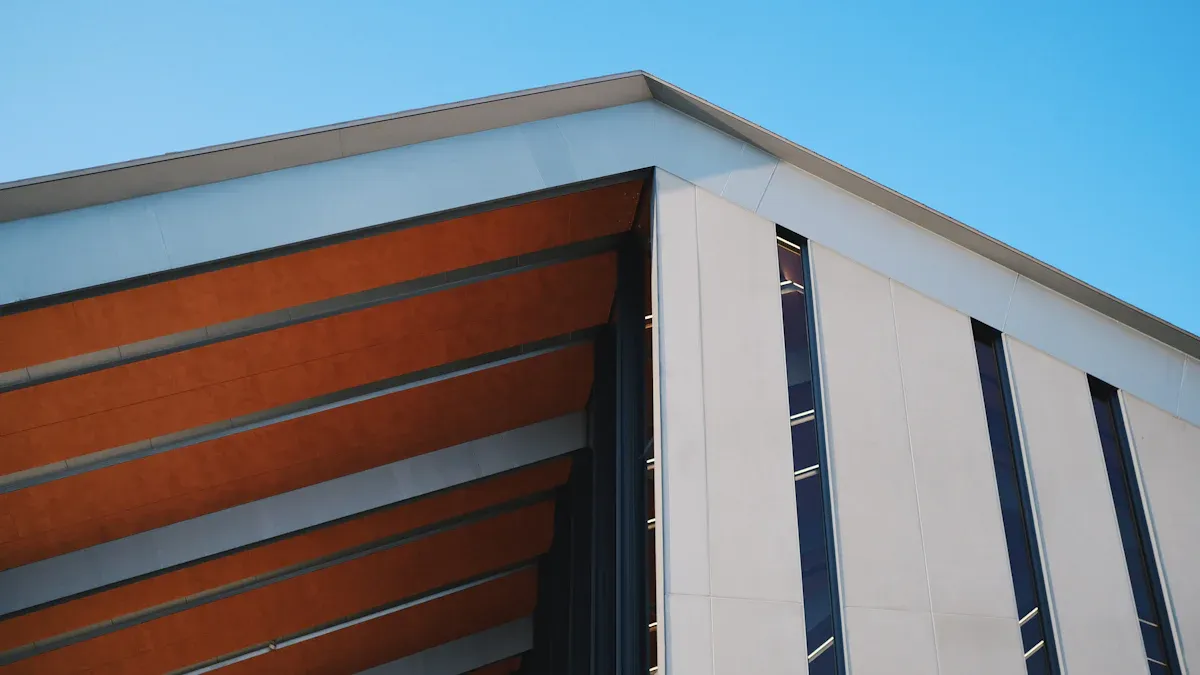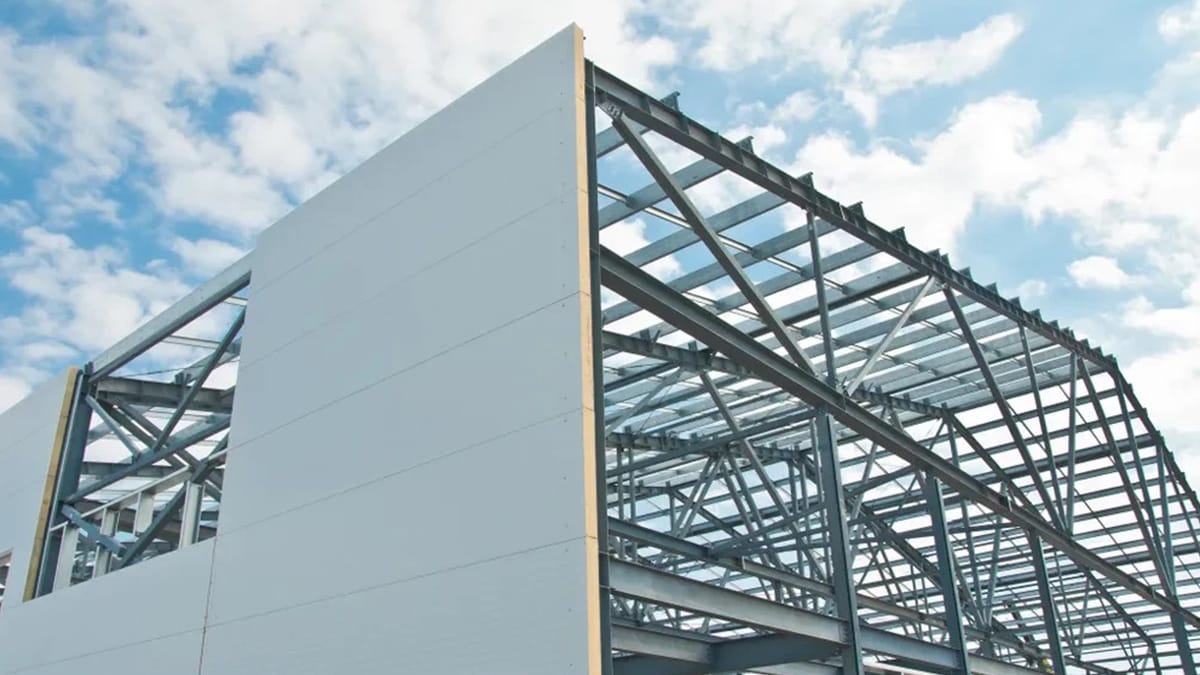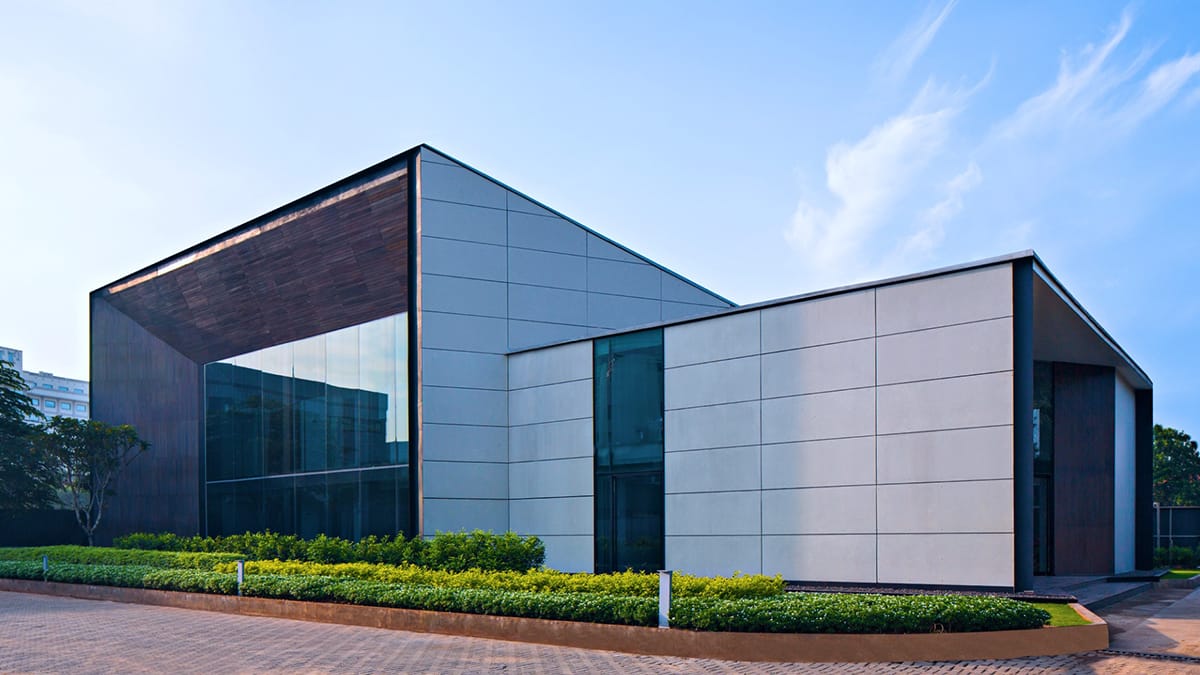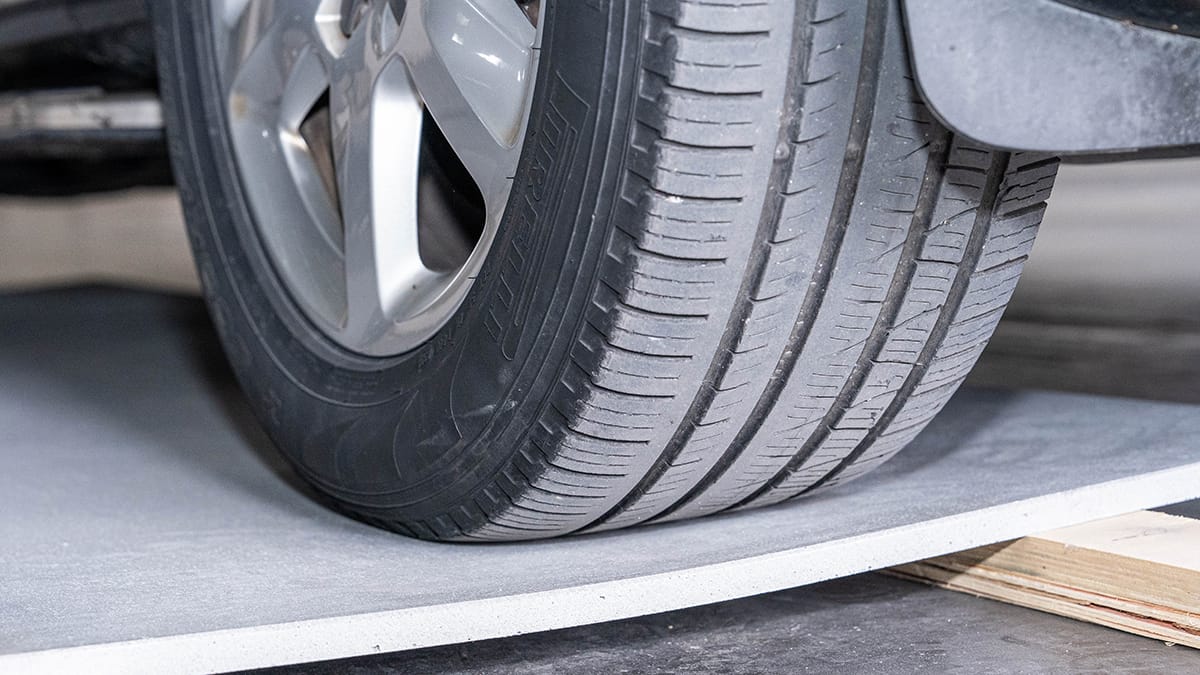
03 Oct Exterior Cement Board Alternatives for Better Durability
Table of Contents
Looking for cement board alternatives that can handle bad weather and water? You have many strong choices. Fiber cement sheets give you a smooth surface that does not crack. Magnesium oxide boards resist fire and last a long time. Metal siding works well in tough climates. PVC panels keep out water and need little care. Plywood and wood wool cement boards are good for lots of projects. If you want something light and easy to put up, gypsum board is another option, but it does not do well with water.
Many people look for other choices because cement boards can be heavy, crack, or be hard to install. Think about your weather and project needs before you choose.
Material | Durability | Moisture Resistance |
|---|---|---|
Cement Board | Very strong, does not sag | |
Gypsum Board | Gets damaged if it gets wet | Not good, cracks with water |
Key Takeaways
Fiber cement board is strong and lasts a long time. It can last 30 to 50 years. It stands up to bad weather.
Magnesium oxide board is light and easy to use. It does not burn and keeps out water. You can install it easily. It does not need much care.
PVC panels work well in places with lots of rain. They do not let water in and do not fade. They are easy to take care of.
Check your local weather before you pick a material. Some materials work better in certain places.
Think about how easy it is to install and how much it costs. Lighter boards like foam board are good for DIY jobs.
Top Cement Board Alternatives
Fiber Cement Board
You might see fiber cement board on many homes. This material stands out among cement board alternatives because it lasts a long time and handles tough weather.
You can expect fiber cement board to last 30 to 50 years if you install and maintain it well.
It resists rot, fire, and pests.
You do not have to worry about hurricanes or extreme temperatures.
Many brands offer a 30-year limited warranty, so you get peace of mind.
If you want siding that stays strong for decades, fiber cement board is a smart choice.
Magnesium Oxide (MgO) Board
 Magnesium oxide board is another top pick when you look for cement board alternatives.
Magnesium oxide board is another top pick when you look for cement board alternatives.
Check out how it compares:
Material | Fire Resistance Description |
|---|---|
Magnesium Oxide Board | Superior fire resistance due to mineral content; does not burn and withstands high temperatures. |
Cement Board | Exhibits fire-resistant qualities but may not perform as effectively in extreme conditions. |
Material | Moisture Durability Description |
|---|---|
Magnesium Oxide Board | Naturally resistant to moisture; does not swell, warp, or break down easily when exposed to water. |
Cement Board | Designed for wet areas but can absorb moisture over time if not properly sealed. |
MgO board does not burn, swell, or warp. You can use it in places with lots of rain or fire risk. It works well for exterior walls and keeps your building safe.
Glass Mat Gypsum Board
Glass mat gypsum board gives you another option for exterior walls.
It absorbs very little water, so it works well in wet areas.
The glass mat stops mold and mildew from growing.
You get the highest score on mold tests (ASTM D3273), and water absorption stays under 5% (ASTM C473).
If you want a healthier home and less worry about mold, glass mat gypsum board is a good pick.
Foam Backer Board
Foam backer board is light and easy to handle.
It resists water, so your walls stay dry.
You do not have to worry about dents or dings during installation.
Some foam boards, like Johns Manville AP™ Foil25, have a compressive strength of 25 psi.
You can use foam backer board behind siding or stucco. It helps protect your home from moisture and damage.
Engineered Wood Siding
Engineered wood siding looks like real wood but lasts much longer.
Most products come with warranties from 30 to 50 years.
You do not have to worry about termites, fungal decay, or rot.
It resists moisture and stays strong in many climates.
If you want the look of wood without the problems, engineered wood siding is a great cement board alternative.
Metal Siding Panels
Metal siding panels give you strong protection against wind and rain.
Galvalume panels resist corrosion better than galvanized panels.
You can expect them to last up to 50 years with little maintenance.
Metal roofs and siding can handle wind speeds up to 140 mph, and some systems go over 180 mph.
Metal siding works well in places with storms or high winds. You get durability and peace of mind.
PVC Panels
PVC panels are popular cement board alternatives for wet climates.
Property | Rating |
|---|---|
Impact Strength | Class 4 (highest for siding) |
UV-treated PVC blocks sunlight, so colors stay bright for over 15 years.
You do not have to worry about cracking or fading.
PVC panels need little care and resist water.
If you want siding that stays looking new, PVC panels are a smart choice.
Plywood Siding
Plywood siding gives you a classic look and solid strength.
It works well for sheds, garages, and homes.
You can paint or stain it to match your style.
Plywood resists impact and handles moderate weather.
You need to seal plywood well to keep out water. It is a good option if you want a natural look and easy installation.
Wood Siding
Wood siding brings warmth and beauty to your home.
You need to paint or stain it every 5 to 7 years to stop weather damage and decay.
Wood siding needs more care than cement board.
It does not resist insects or rot as well as other options.
If you love the look of wood and do not mind extra work, wood siding can be a good choice. For less maintenance, you might want to try other cement board alternatives.
Why Choose Alternatives?
 Common Issues with Cement Board
Common Issues with Cement Board
Cement board seems strong, but it can still have problems. If you do not install it right, cracks can show up. Many people see cracks near windows and doors. These cracks happen when the house moves or has stress. Water can get inside if caulking breaks or the house wrap fails. Using the wrong fasteners can make more cracks appear. Not leaving enough space for expansion also causes issues. When the weather changes, the board expands and shrinks. This puts stress on the board and can damage it. If your house settles, new cracks can form and be easy to see.
Here are some problems you might have with cement board:
Cracks near windows, doors, and joints from stress
Water getting in from bad caulking or house wrap
Not enough space for expansion or wrong fasteners
Cracks from temperature changes making the board move
House settling that causes new cracks and damage
Tip: To avoid these problems, try cement board alternatives that handle stress and water better.
Durability and Moisture Concerns
Cement board does well with water, but it acts differently in each climate. It does not swell or get weak when wet. The board keeps its shape even after being wet for a long time. Mold and mildew do not grow easily on cement board. You get a waterproof surface that does not soak up much water. The board stays strong and does not bend or break apart, so you can use it for many years.
Feature | Description |
|---|---|
Moisture Resistance | Does not swell, crack, or weaken when wet |
Shape Retention | Keeps its shape after long exposure to moisture |
Mold Resistance | Mold and mildew rarely grow on the surface |
Waterproof | Very waterproof, does not absorb much water |
Durability | Stays strong, does not bend, swell, or fall apart when wet |
If you live where it rains a lot or is very humid, you need siding that can handle water. Some cement board alternatives protect even better and are easier to install. This helps you avoid problems and keeps your home safe.
Cement Board Alternatives Compared
Fiber Cement – Pros and Cons
You get strong protection with fiber cement siding.
Pros:
Lasts for decades with little maintenance
Handles tough weather and pests
Resists fire and moisture
Cons:
Needs special tools and safety gear
Costs more to put up than vinyl or foam board
Fiber cement works best if you want long-lasting siding and do not mind a tougher installation.
MgO Board – Pros and Cons
Magnesium oxide board gives you a lighter choice.
Board Type | Initial Cost | Installation Cost | Maintenance Cost |
|---|---|---|---|
Magnesium Oxide Board | Higher | Lower | Less |
Fiber Cement Board | Lower | Higher | More |
MgO board is easy to install and does not need much upkeep.
It resists water and fire better than many other options.
You pay more at first, but you save on labor and repairs.
Glass Mat Gypsum – Pros and Cons
Glass mat gypsum board stands up to wet weather.
Material | Water Resistance | Mold Resistance | Fire Resistance |
|---|---|---|---|
Glass Mat Gypsum Board | Excellent | Excellent | Excellent |
Pros:
Great for damp climates
Stops mold and mildew
Handles fire risks
Cons:
Not as strong as cement board alternatives
Can dent or break if hit hard
Foam Board – Pros and Cons
Foam backer board makes installation quick.
Material | Installation Time | Labor Cost |
|---|---|---|
Foam Backer Board | Quicker | Potentially Lower |
Cement Backer Board | More Time-Consuming | Higher Due to Complexity |
Foam board is light and easy to cut.
It resists water and helps insulate your home.
You save time and money on labor, but foam can dent more easily.
Engineered Wood – Pros and Cons
Engineered wood siding looks natural and helps the environment.
Environmental Impact Category | Engineered Wood Siding | Non-Wood Alternatives |
|---|---|---|
Eutrophication Potential | Lower than steel | Highest in steel |
Smog Potential | Lower than plastics | Highest in steel |
Non-Renewable Material Usage | Significantly lower | Higher for non-wood |
Renewable Biomass Fuel Usage | 22% to 56% of energy | N/A |
Carbon Emissions | Negative | N/A |
You can recycle engineered wood panels.
They use less fossil fuel and help lower carbon emissions.
You need to check for damage and do more upkeep than with metal or PVC.
Metal Siding – Pros and Cons
Metal siding panels protect your home from storms.
Metal resists wind, hail, and water.
Steel siding lasts 50 years or more and needs little care.
You pay more up front, but you save on repairs and replacements.
Metal siding is a top pick for places with harsh weather.
PVC Panels – Pros and Cons
PVC panels keep their color and shape for years.
Material | Color Retention (%) after UV Exposure |
|---|---|
PVC | 80-85% |
PVC resists fading and cracking.
You do not need to paint or stain it.
It works well in wet climates but may not look as natural as wood.
Plywood – Pros and Cons
Plywood siding gives you a classic look.
Feature | Plywood Siding (T1-11) | Cement Board (Fiber Cement) |
|---|---|---|
Fire Resistance | Combustible, not inherently fire-resistant | |
Structural Integrity | Susceptible to moisture damage and pests | Durable, low maintenance, resistant to moisture and rot |
Plywood is easy to install and finish.
You need to seal it well to keep out water and pests.
It does not resist fire as well as other cement board alternatives.
Wood Siding – Pros and Cons
Wood siding brings warmth and beauty.
High-density hardwoods and thermally modified woods work best outside. These woods resist insects and decay. You do not need to paint or stain them, just use a UV oil finish. They age to a silvery-gray color but stay strong.
Wood siding needs more care than other options.
It works well in many climates if you choose the right type.
You get a natural look, but you must check for rot and pests.
Durability Comparison Table
 Key Features Overview
Key Features Overview
When you look at cement board alternatives, you want to know how they handle water, fire, and daily use. You also care about how easy they are to put in and how much money you need. Here is a table that shows the main features for each material:
Material | Durability | Moisture Resistance | Weight | Fire Resistance | Installation Ease | Cost |
|---|---|---|---|---|---|---|
Fiber Cement Board | Very High | Excellent | Heavy | Excellent | Moderate | High |
High | Excellent | Light | Excellent | Easy | High | |
Glass Mat Gypsum Board | Moderate | Excellent | Light | Excellent | Easy | High |
Foam Board | Low-Moderate | Good | Very Light | Poor | Very Easy | Moderate |
Plywood | Moderate | Poor | Moderate | Poor | Easy | Low |
Engineered Wood Siding | High | Good | Moderate | Moderate | Moderate | Moderate |
Metal Siding Panels | Very High | Excellent | Moderate | Excellent | Moderate | High |
PVC Panels | High | Excellent | Light | Poor | Easy | Moderate |
Wood Siding | Moderate | Poor | Moderate | Poor | Moderate | Moderate |
Use this table to help you pick the best material for your needs. If you live where it rains a lot, fiber cement, magnesium oxide, or PVC panels are good choices. These materials stop water and mold. If you want something light and simple to install, foam board or glass mat gypsum board might be best.
Let’s look at some important features to think about:
WediBoard: You get straight walls and it is easy to put up. It is light, so you can carry it without trouble.
KerdiBoard: This board keeps water out. You need to cut it carefully, and it costs more money.
Plywood: It is strong and cheap, but water can hurt it. Use plywood in dry rooms.
Fiber Cement Board: This board stops water, mold, and fire. It is heavy and costs more, but it lasts a long time.
Magnesium Oxide Board: You get a light and eco-friendly choice. It costs more at first, but you save on labor.
Foam Board: It keeps heat in and is easy to move. It is not as strong as other boards.
Glass Mat Gypsum Board: This board fights water and mold. It is light, but it can bother your skin and costs more.
Pick the board that fits your project. Bathrooms and kitchens need boards like WediBoard or KerdiBoard because they stop water. Living rooms work well with plywood. For outside walls, use fiber cement or magnesium oxide boards. If you need to keep heat in, foam boards help. For tile in wet places, glass mat gypsum boards are best.
Think about your weather, your money, and how much work you want to do. The right board helps your project last longer and look nice.
Choosing the Right Alternative
Climate and Weather
You want your siding to stand up to your local weather. If you live where it rains a lot or storms hit hard, pick materials that resist water and wind. Fiber cement, magnesium oxide, and metal panels work well in wet or windy places. In dry, hot areas, you might like engineered wood or PVC panels. Always check if the material protects against fire and water. These two things keep your home safe and help your siding last longer.
Tip: Think about your climate first. The right choice now saves you trouble later.
Installation and Labor
Some materials are heavy and need special tools. Fiber cement and metal panels take more time and skill to install. If you want something easy, foam board or glass mat gypsum board are light and simple to cut. Engineered wood and PVC panels also go up fast. If you plan to do the work yourself, choose a material you can handle without help.
Heavy boards = more labor and higher costs
Light boards = easier for DIY projects
Budget and Maintenance
Your budget matters. Some siding costs more at first but saves you money over time. Here’s a quick look at costs and care:
Material | Initial Cost Range | Lifespan | Maintenance Needs |
|---|---|---|---|
Cedar | Moderate | Needs treatments to keep color | |
Redwood | Higher | 25-35 years | Regular treatments for appearance |
Composite | Moderate | 25 years | Just cleaning, no sealing needed |
Capped Composite | Higher | 30+ years | Minimal, just occasional cleaning |
Exotic Hardwoods | High | 50+ years | Cleaning, sometimes oil treatments |
Aluminum | High | 50+ years | No maintenance required |
If you want low upkeep, aluminum or capped composite are great. Wood looks nice but needs more care.
Aesthetics
Looks matter, too! Do you want a modern style or a classic look? Wood siding brings warmth and charm. Metal and PVC give a sleek, clean finish. Engineered wood copies the look of real wood but lasts longer. You can paint or stain many options to match your taste.
Choose what fits your home’s style and your own preferences. The right siding makes your house feel like home.
You have plenty of strong choices for exterior siding. Fiber cement, MgO board, metal panels, and PVC all offer great durability and moisture resistance. Each material works best in different climates and projects. Want to make the right call? Try comparing samples or talk with a local pro.
Tip: List your needs, check the pros and cons, and pick the option that fits your home and budget. Your siding should last and look good for years!
FAQ
What is the best alternative to cement board for wet climates?
You should try fiber cement, magnesium oxide, or PVC panels. These materials block water and stop mold. They last a long time, even when it rains a lot.
Can I install these siding options by myself?
You can install foam board, glass mat gypsum, or PVC panels on your own. Fiber cement and metal panels need special tools and more skill. Ask a pro if you feel unsure.
How often do I need to maintain engineered wood or wood siding?
You need to check wood siding every year. Paint or stain it every 5 to 7 years. Engineered wood needs less care, but you should still look for damage and clean it sometimes.
Are metal siding panels noisy during storms?
Metal siding can make noise when rain or hail hits. You can add insulation to reduce sound. Most people get used to the noise quickly.

 Common Issues with Cement Board
Common Issues with Cement Board Key Features Overview
Key Features Overview